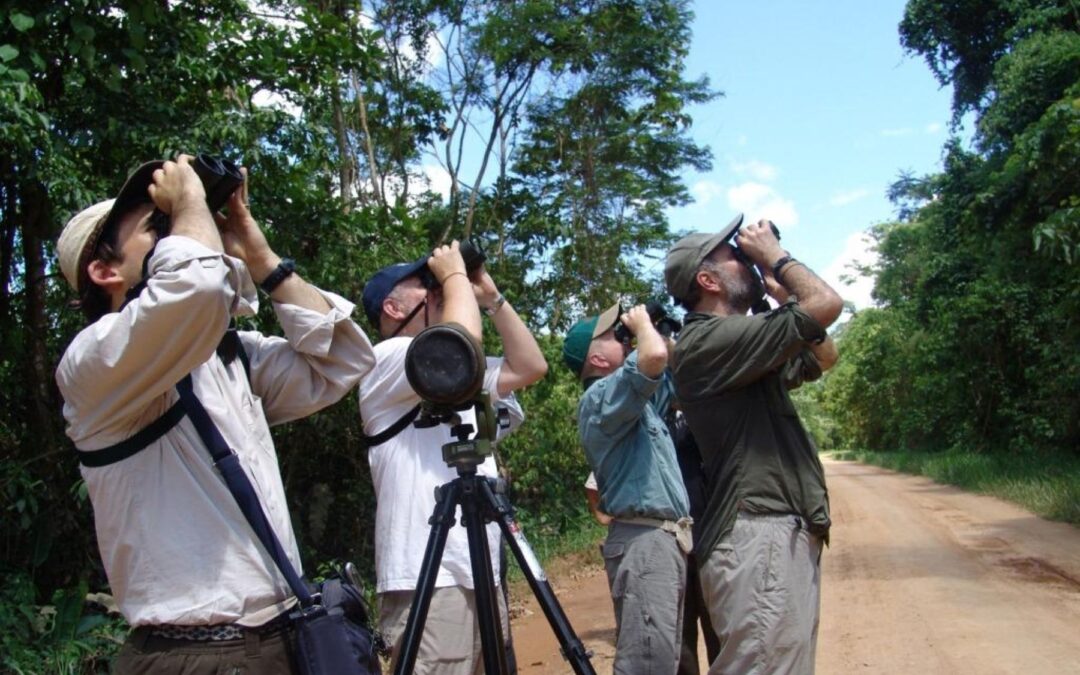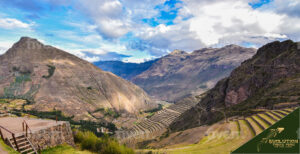Discover the unique beauty of Peru’s avian life with a birdwatching trip to one of South America’s most diverse countries. From Machu Picchu and the Inca Trail, to lesser-known reserves and parks, you can find some of the world’s rarest birds in their natural habitats when birdwatching in Peru. Learn about best practices for spotting these majestic creatures as well as what you need to know about Peruvian wildlife laws before your journey begins. Discover accommodations perfect for viewing exotic species while exploring beyond birdwatching activities during your stay. Get all the tips needed for staying safe on this exciting adventure through Peru.
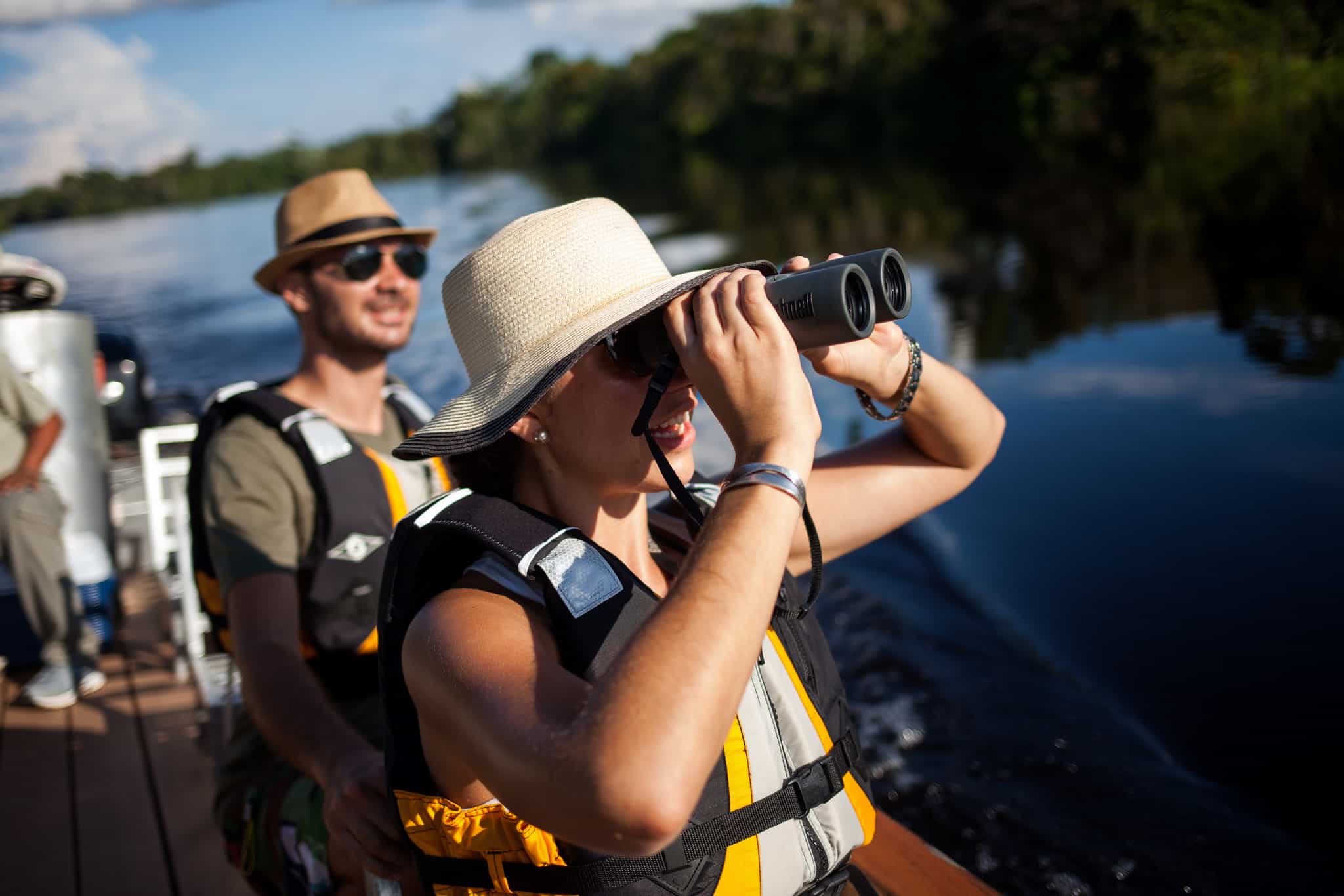
Planning Your Birdwatching Trip to Peru
Birding in Peru is a remarkable experience, attracting many visitors hoping to observe some of its most distinctive avian species. Whether you’re a seasoned birder or just starting out, there are plenty of ways to make your birding trip one that will be remembered for years to come. Here are some tips on how to plan your birdwatching adventure in Peru:
The optimal moment for avian observation in Peru is during the arid season (May-October). This is when migratory birds arrive from North America and South America, making this period ideal for spotting rarer species. It’s also important to consider altitude when planning your trip; certain areas may require higher altitudes than others, depending on what kind of birds you’re looking for.
What Gear You’ll Need:
- Birders should always bring their binoculars, camera, field guidebook, and journal, as these items will help them identify the various species they encounter while exploring.
- Additionally, it’s important not to forget about clothing; dress appropriately according to the weather conditions at each location you visit, as temperatures can vary drastically between different regions.
- Bring insect repellent to ward off pesky mosquitoes and other biting insects in Peru’s tropical forests during summer. Mosquitoes and other biting insects can be particularly pesky in Peru’s tropical forests during summer.
- Before heading off on your journey, research which sites offer good opportunities for viewing certain birds. Many online resources are available with detailed information about where different types gather throughout the country at any given time of year.
- Additionally, check local regulations regarding permits or fees required before entering certain reserves or protected areas; these restrictions exist both nationally and locally across Peru, so it pays off to do due diligence beforehand.
- Lastly, take advantage of tour operators who specialize in bird-watching trips if possible; they often have access to exclusive locations with greater chances of seeing more exotic specimens like the Andean Cock-of-the Rock or Puna Ibis.
Planning a birdwatching journey to Peru may seem intimidating, yet with the right prep and exploration. You can have a fantastic experience. Now let’s look at some of the notable species of birds that call Peru home.
Best Birdwatching Tours in Peru
There are many fantastic birdwatching excursions in Peru created to display the country’s remarkable wealth of exotic birds and scenic terrains. Starting from the opulent Amazon Rainforest and extending up to mesmerizing Andes Mountains, our meticulously arranged travel plans cover many habitats that deliver unmatched opportunities for avian fanatics regardless of their proficiency level.
Our itineraries are planned meticulously for success in the shortest time possible, but adding extra days allows for opportunities to see elusive or rare species and delve deeper into Peru’s diverse avian population.
We offer versatile outline designs for Customized Tours and Fixed Departures aimed at accommodating small groups of birdwatchers with diverse hobbies and inclinations. You can choose between following our standard itineraries or extending your trip to focus on your unique interests; we have the adeptness and background required to assist you in devising an ideal avian exploration experience in Peru.
At our birding tours, there are no limits to what you can achieve. Our team of experts will provide you with the guidance and tools required for success in your quest. Their advice is tailored to your goals – whether it involves a long list of elusive species or simply enjoying a leisurely birdwatching getaway. Our ultimate objective is to provide an unforgettable experience that immerses visitors into the world of avian wildlife found exclusively within this country’s borders.
The Fixed Departures of our tours shift annually, contingent on triumphant journeys in the past, pleasant customer reviews, and the interests that drive our seasoned leaders. These leaders are zealous bird-watchers who derive immense pleasure from engaging with all aspects of avian appreciation; they do not just solely compile catalogs for tracking purposes. Their passion is unbridled as it spreads effervescently amongst visitors during every excursion we offer.
We offer several sought-after avian excursions, comprising: – A trip to the habitats of rare and exotic birds. – An exploratory foray in search of elusive bird varieties. – A journey through unique environments that attract diverse species.
Below is a list of our best birdwatching tours in Peru
- 10-Day Amazon Rainforest Expedition. Embark on a voyage to the central part of the Amazon Rainforest with this 10 day-long expedition. Explore Tambopata National Reserve, Manu National Park, and Pacaya-Samiria National Reserve, where exotic birds thrive in abundance around you.
-
18-day high Andean Birdwatching Expedition. Travelers can embark on a splendid expedition known as Andean Delights, typically lasting 14 to 18 days. On this extraordinary excursion through the iconic Andes mountain range, you will be taken aback at every turn by exploring unparalleled bird species specifically found in high-altitude terrains like Abra Patricia Reserve or Huascaran National Park, coupled with prodigious Polylepis forests.
-
16-day Northern Peru Expedition. Embark on a unique birdwatching journey through our 12-16 days adventure, discovering the hidden gems of its bird population. Explore well-known places that are famous among avid bird watchers, such as Marañón Valley, Tumbes National Reserve, and Alto Mayo’s cloud forests.
-
10-day Coastal and Seabird Extravaganza. Embark on a fascinating adventure spanning up to ten days in Peru’s most exotic coastal birding paradise. Discover Peru’s mesmerizing coastline while observing magnificent seabirds and shorebirds at exceptional locations like Paracas National Reserve, Ballestas Islands, or Pantanos de Villa Wildlife Refuge. Indulge in the mystical realm of bird-watching in Peru with our extraordinary excursions, expertly crafted to furnish an unparalleled odyssey through multifaceted environments and an unrivaled avian assortment. Accompany us as we set foot on a breathtaking escapade to disclose the concealed marvels of this ornithological haven.
Travel and health considerations for visiting Peru.
For those interested in bird-watching, Peru presents an exciting destination. However, planning your journey requires considering numerous travel and health concerns to make the trip as smooth as possible. It is important that proper research be done beforehand on visas required for entry into the country along with recommended vaccinations before stepping foot in this picturesque land of diversity. Purchasing a comprehensive insurance policy can offer peace of mind while traveling through less-familiar territory where unforeseen circumstances may arise. Travelers should expect altitude sickness when visiting higher elevations such as Andes by acclimatizing slowly and keeping hydrated throughout their visit so they do not risk any illnesses during their travels abroad. Additionally, it’s advisable that one become familiarized with local cultural customs in addition to being aware of transportation options available upon arriving at or departing from various points within Peru including researching currency exchange rates prior to departure ensures clarity whilst shopping or paying vendors which will also contribute towards a smoother -and enjoyable- experience overall .

Notable bird species in Peru
Endemic and endangered species:
Peru has a diverse range of bird species that are exclusively present in the country and at risk, needing protection. These numerous birds include the Marvelous Spatuletail, Long-whiskered Owlet, and White-winged Guan which provide an exceptional opportunity to watch these rare creatures for avid ornithologists. However, proper research on locations and seasonal periods is necessary to increase your likelihood of spotting them during travel adventures.
Migratory Birds:
Throughout the year, a plethora of migratory bird species flock to Peru. These include avians that dwell on shorelines or wetlands and warbling birds alike. Increase your chances of spotting these elusive creatures by familiarising yourself with their migration habits beforehand. To see them in abundance, visit areas rich in both waterbodies and coastlines such as Paracas National Reserve since they are particularly crucial pit-stops for many migrating bird populations every season.
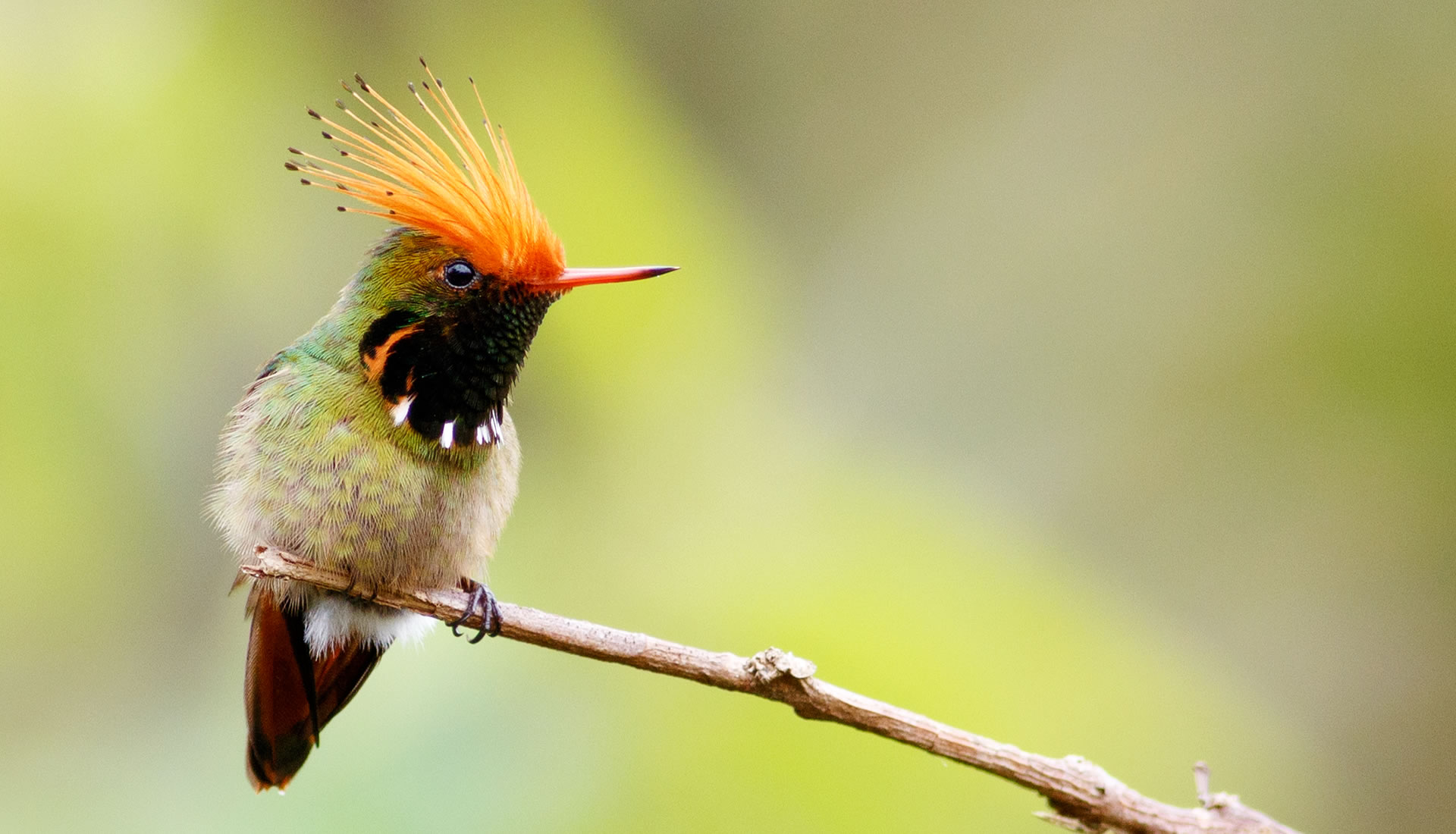
Where to Go Birdwatching in Peru
Peru is a paradise for birdwatchers, boasting over 1800 species of birds. The country’s diverse landscapes and habitats make it an ideal destination for birders exploring the Andes Mountains, Amazon rainforest, coastal regions, and much more. Whether you’re a beginner or an experienced birder, Peru offers plenty of opportunities to observe rare and endemic species in their natural environment. For the avid birdwatcher, Peru provides an array of exciting locations for spotting endemic species in their natural habitats, ranging from the Andes Mountains to the Amazon rainforest and beyond.
Bird watching in Machu Picchu and the Inca Trail
Machu Picchu and the Inca Trail are renowned birdwatching sites in Peru, offering a chance to observe many endemic species, such as the Andean Condor, Great Inca Finch, and South American Snipe. Located in the Andes Mountains, these areas provide an excellent opportunity to observe some of Peru’s unique endemic species, such as the Andean Condor, Great Inca Finch, and South American Snipe. Birdwatchers will have the chance to spot a selection of typical avian species, including Hummingbirds, Terns, Falcons, and other migratory birds exclusive to this area of South America.
The best time for bird watching at Machu Picchu is between April and October, when many tropical birds migrate from Central America into Southern Peru. During this period, visitors may see Guanay Guano Birds or a Manu National Park Giant Hummingbird. The northern regions around Machu Picchu offer plenty of opportunities for spotting interesting species like the White-winged Guan or Peruvian Sheartail, while further south near Cusco, one can find endemic birds like the Andean Cock-of-the-Rock and Common Thornbird.
Visitors who wish to explore beyond bird watching should consider taking a guided tour along the Inca Trail, which connects Cusco with Aguas Calientes (Machu Picchu). Along this trail, you will have chances to spot various hummingbirds, including Peruvian Plantcutter and numerous raptors, such as Peregrine Falcon or Red-tailed Hawk. You might even catch sight of some rarer species, such as the Humboldt Penguin or Peruvian Recurvebill, if you are lucky enough.
Bird watching in Machu Picchu and the Inca Trail offers a unique opportunity to observe some of Peru’s most beautiful birds. With that said, let us now look at how one can best enjoy birdwatching in Peru.
Southern Peru
Peru’s south boasts a wealth of birdwatching opportunities, including the Manu National Park and Tambopata National Reserve. These reserves are home to an array of species that can’t be found anywhere else, such as White-winged Guan (Penelope albipennis), Andean Condor (Vultur gryphus), Common Cactus Finch (Geospiza scandens ), Gray Tinamou(Tinamus tao ), Great Inca Finch (Incaspiza pulchra ), Humboldt Penguin(Spheniscus humboldti), Guanay Guano Bird(Cyanoliseus yncas) and Peruvian Sheartail (Thaumastura cora). With its plethora of avian wonders, Southern Peru is truly a haven for twitchers.
Central Peru
This region is a great option for birders who don’t want to venture too far from Lima. At Cruz del Cóndor near Abancay, you can get the chance to witness majestic Andean Condors taking flight and Aguas Calientes near Machu Picchu has its own array of birds like Red-crested Cotinga, White Tufted Sunbeam and Golden Collared Tanager. If you have time on your hands, Huacarpay Lake is worth a visit as it’s home to some vibrant waterfowl such as Yellow Billed Teal Duck and Puna Ibis. Get ready for an unforgettable experience.
Northern & Northwestern Peru:
In the northern part of the country lies Pacaya Samiria National Reserve which hosts many interesting species including Peruvian Recurvebill ((Simoxenops ucayalae)), Amazon Kingfisher ((Chloroceryle amazona)) , Inca Tern((Larosterna incanum)), Giant Hummingbird((Patagonia gigas)) among others . Further up north lies Northwest region which holds beautiful endemic birds like Grey Breasted Mountain Toucan((Andigena hypoglauca)),Black Chested Buzzard Eagle((Geranoetus melanoleucus)) Peruvian Pygmy Owl((Glaucidium peruanum)) etc . Eastern parts offer a chance at spotting colorful parrots along with hundreds of other varieties ranging from Scarlet Macaw ((Ara macao ))to Purple Throated Fruitcrow [[Querula purpurata]].

Best Practices for Birdwatching in Peru
Tips for staying safe while birdwatching in Peru
When birdwatching in Peru, it’s essential to take proper precautions for your well-being. Here are some helpful tips: Stick to designated trails and show consideration towards any local regulations; always carry an emergency contact number along with a first aid kit in case of unforeseen circumstances or accidents, while also being alert around wildlife animals and insects that may be hazardous. Moreover, make sure someone knows about your itinerary beforehand when traveling alone, whenever possible opt-out group tours instead of solo outings as there is safety in numbers during expeditions like these-remember to maintain hydration levels by drinking sufficient water throughout the trip so you can avoid altitude sickness or heatstroke complications later on.”
Ethical birdwatching guidelines
The act of engaging in birdwatching while giving consideration to ethics is essential. In order to practice responsible behavior, one must follow ethical guidelines such as keeping a dignified distance from the avian creatures and their dwelling places , abstaining from using playbacks, decreasing noise levels and avoiding disruption . It’s also critical that we hold reverence for local communities and cultures by upholding wildlife regulations which will ultimately result in an enriching experience for all those involved with minimal impact on our environment.
Photography tips for capturing stunning bird images
Discover techniques for snapping breathtaking photographs of birds by utilizing a camera equipped with an adjustable focal point, engaging in prolonged periods of waiting without reacting impulsively, and familiarizing oneself with peculiar habits specific to the bird one intends to capture. Ponder over elements such as illumination levels, arrangement or placement within frame space, plus exactness when blurring certain parts while precisely defining others. Bear in mind that prioritizing the wellness and safety of these creatures through avoidance of any disruptive activity is crucial during photography sessions.
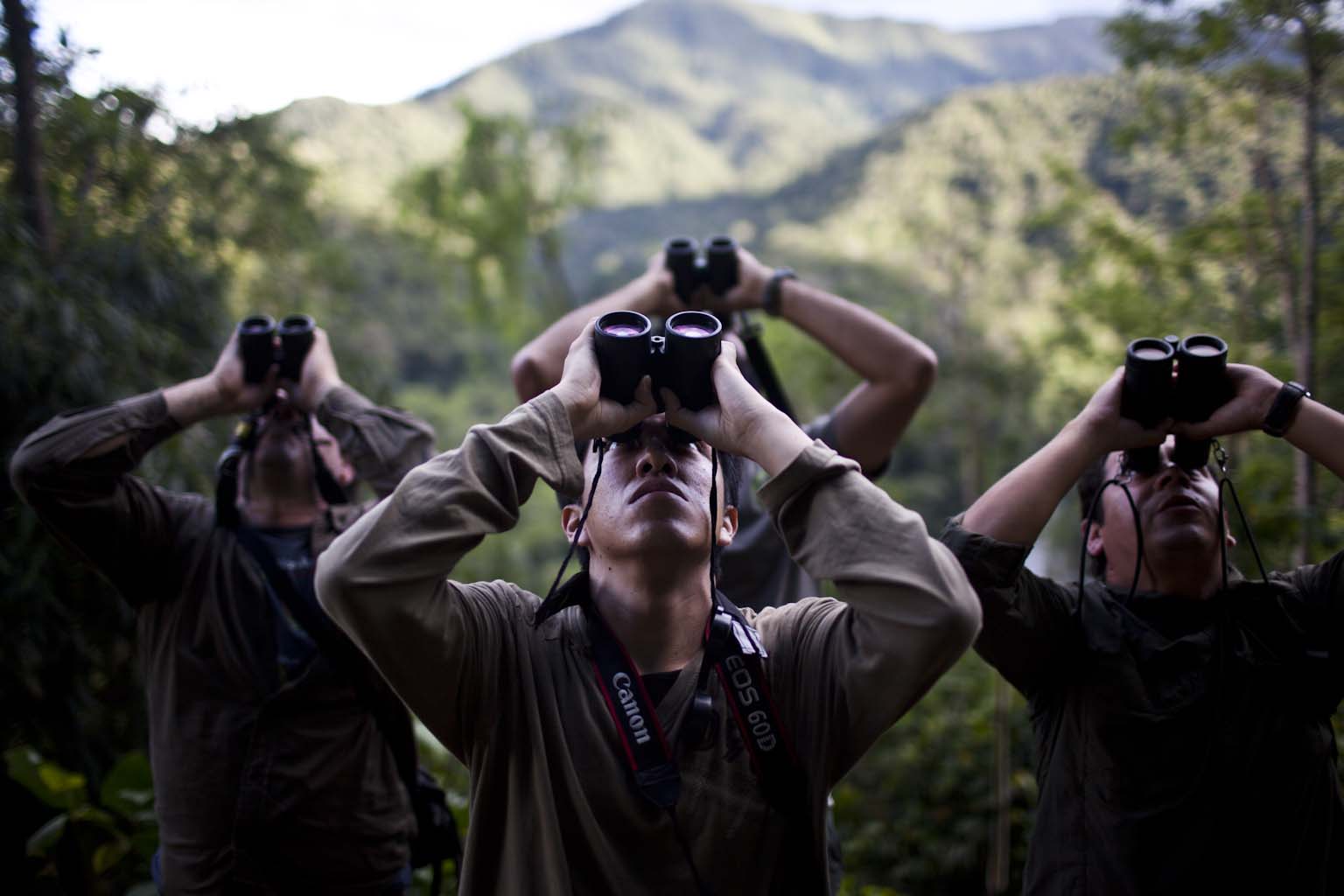
What You Need to Know About Peruvian Wildlife Laws
Peruvian Wildlife laws
Peru is renowned for its abundant and varied avifauna, drawing bird lovers from around the globe to catch a glimpse of these captivating creatures. Birdwatchers flock to Peru each year to observe these amazing creatures up close. But before you embark on your birdwatching adventure, it’s important to understand the regulations that protect wildlife in Peru and how they affect birdwatchers.
The Peruvian government has implemented several laws designed to protect its native wildlife from exploitation or disturbance. Peruvian law prohibits the hunting, trapping, acquisition or trading of any wild bird species without permission from local authorities. Birders must also obtain permission before entering protected areas such as national parks or reserves where certain species may be found. Visitors must maintain a distance of at least 50 meters from nesting sites to avoid disrupting birds during their breeding period.
Birders should adhere to certain restrictions when using equipment while observing birds in the wild, such as binoculars not exceeding 8x magnification and cameras with telephoto lenses no more than 400mm focal length for rarer species like Andean Condors or Great Inca Finches. Furthermore, visitors must keep noise levels low by refraining from playing recorded calls of endangered birds since this could draw predators looking for food sources nearby. Keywords: Binoculars, Cameras, Magnification, Telephoto Lenses, Noise Levels, Recorded Calls.
Before beginning a birdwatching trip in Peru, it is important to be familiar with the local wildlife laws and regulations. With that knowledge, you can now search for accommodations that suit your needs during this journey.
Permits and fees for birdwatching in protected areas
Some birdwatching locations in Peru, such as national parks and reserves, may require permits or charge entrance fees. Research these requirements ahead of time to avoid any complications during your trip. Obtaining permits and paying fees contribute to conserving and maintaining these natural habitats, ensuring a sustainable future for Peru’s incredible birdlife.
Local Birdwatching Communities and Citizen Science
Connecting with local birdwatching groups
There are several ways to get in touch with nearby birdwatching enthusiasts while exploring Peru. Collaborating with local communities of avian observers can enhance your trip by leading you towards uncharted destinations for encountering rare species throughout the region. Reaching out via social media, interactive forums or affiliated societies is a great approach when seeking guidance and counsel from those who have experience on how best to broaden your exposure and truly appreciate ornithology’s wonders during your visit here.
Contributing to bird conservation efforts through citizen science
While on your birdwatching adventure in Peru, consider participating in citizen science projects that aid local conservation efforts for birds. Utilize platforms like eBird to document and distribute your findings – this data is both useful to researchers and important toward the preservation of unique Peruvian avian biodiversity. By engaging with citizen science initiatives, you have an opportunity to significantly contribute towards improving our understanding of these natural wonders while simultaneously aiding their continued existence through purposeful actions.
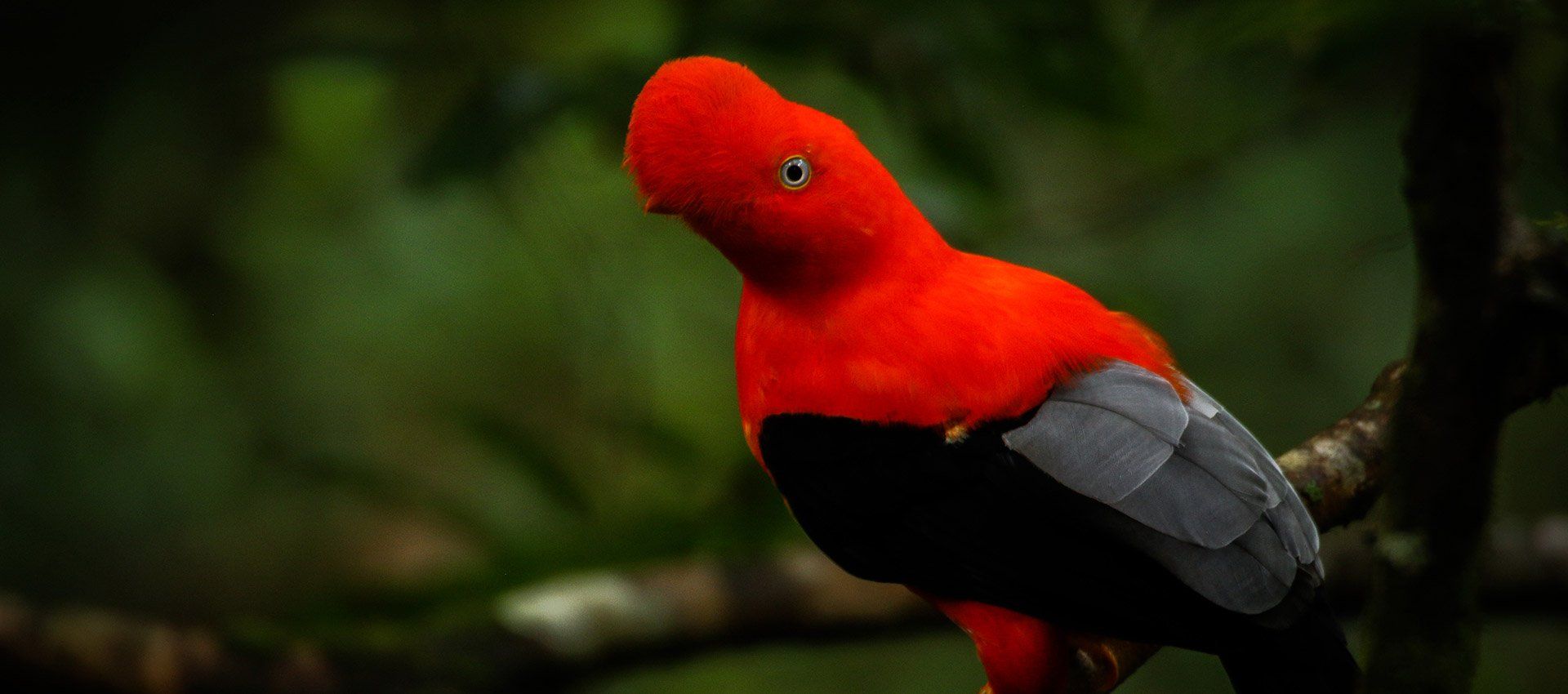
Exploring Beyond Birdwatching in Peru
Peru is a birdwatcher’s paradise, with hundreds of species to be seen in the country’s diverse habitats. Apart from birdwatching, Peru travelers can partake in various activities such as discovering ancient ruins and trekking through stunning scenery. From exploring ancient ruins to hiking through spectacular landscapes, Peru offers something for everyone.
Hiking and Trekking:
Peru has incredible trails, from easy day hikes to multi-day treks like the Inca Trail or the Salkantay trek. Explorers can observe the remarkable panorama of towering, snow-capped peaks, deep valleys, and abundant forests while traversing these trails. The trails also offer a chance to spot rare birds, such as Andean Condors and Great Inca Finches.
Machu Picchu, the iconic Inca city constructed more than half a millennium ago and still standing on a mountain ridge in Peru’s Sacred Valley, is an awe-inspiring sight. Other important archaeological sites include Choquequirao (an impressive ruin complex near Cusco), Kuelap (an impressive pre-Inca fortress located in northern Peru), and Pachacamac (an ancient religious center south of Lima).
Visiting National Parks:
For those looking for wildlife beyond birds, there are numerous national parks throughout Peru where you can observe animals such as jaguars, pumas, ocelots, and spectacled bears in their natural habitat. Manu National Park, one of South America’s most expansive protected zones, spans a whopping two million hectares and is inhabited by an astonishing 1,300 avian species. Tambopata National Reserve is another great destination for wildlife lovers; it’s home to macaws and other tropical birds, as well as giant river otters and capybaras.
Beaches & Islands:
If you’re looking for sunbathing opportunities or want to take part in watersports like surfing or kayaking, then head down to one of Peru’s many beaches on its Pacific coast – Máncora Beach is particularly popular among travelers due to its white sand beaches backed by palm trees. The Ballestas Islands off Paracas are also worth checking out if you’d like to see sea lions up close or explore mysterious Nazca Lines carved into desert rocks centuries ago by unknown people
No matter what kind of activity you choose during your visit to Peru – birdwatching included – ensure you stay safe at all times. Be aware that certain areas may not be suitable for solo travel, so always check local advice before setting off on any excursion into remote parts.
Venturing beyond birdwatching in Peru can be an incredible way to witness the country’s special wildlife and natural grandeur. With that said, it is important to be aware of safety precautions when visiting unfamiliar areas; the next heading will provide tips for staying safe while birdwatching in Peru.

Conclusion
Exploring Peru’s stunning scenery and diverse wildlife, birdwatching is a great way to experience the country. From the iconic Machu Picchu and Inca Trail to hidden gems, Peru offers a range of birdwatching spots for novices and experts alike. Make sure you plan your trip carefully, respect local laws, find suitable accommodations, stay safe at all times,, and enjoy everything that Peru offers. Birdwatchers can experience an unforgettable adventure when they take part in this amazing activity while visiting Peru – so don’t forget your binoculars.
Explore Peru’s diverse birdlife with us and experience the beauty of nature! Book your trip today to take advantage of our exclusive offers.

Miguel is a professional tour guide from Cusco, Peru, with almost 20 years of experience leading tours and a deep knowledge of Peru’s cultural and ecological diversity. He is also an advocate of ecotourism and cultural sensitivity and has lectured on these topics in the US and Europe. He co-founded Evolution Treks Peru, a worker-owned travel company based in Cusco.

